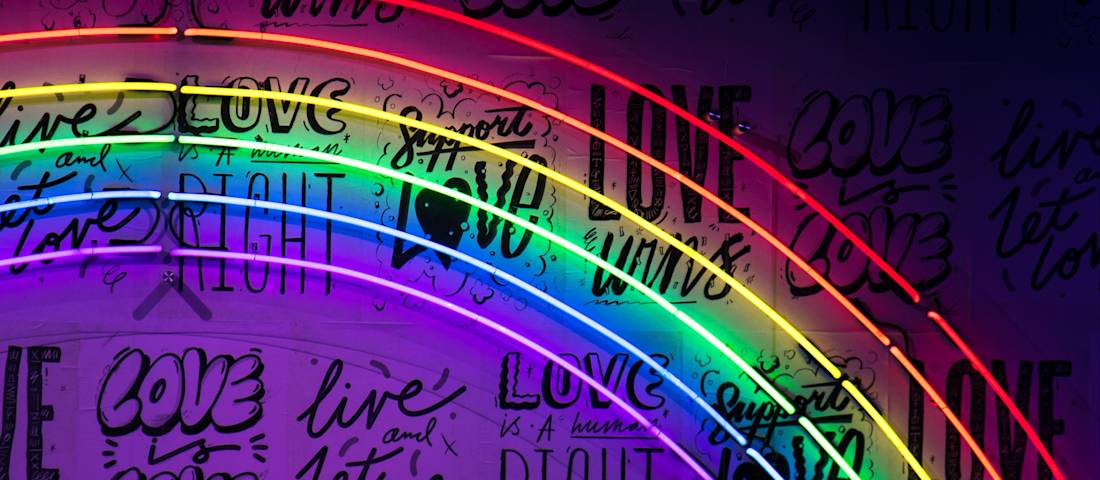You’ve probably seen a few more rainbows around this month, or you may have even seen a Pride parade in a town near you. But as pretty as these rainbows are, the message behind Pride month is much more than that. And with children in Early Years, it’s never too early to start these important conversations around big topics - to help equip all our children to grow up to be respectful and accepting of individuality and difference.
Pride month celebrates all of the identities people have. It’s a cultural concept and it came about after the 1969 Stonewall Riots in the USA - when a group of patrons in a NYC establishment stood up for themselves and their identity in the face of Police raids. From 1970 ‘Pride marches’ then took place annually and as a movement Pride has grown in strength over the following 50 years.
Pride aims to build tolerance and acceptance across communities. Celebrating LGBTQ+ youths, and adults, and building a culture where all members of our society feel their uniqueness is honoured and welcomed. A society where all people feel heard and valued.
At tiney, we want our children to grow up feeling seen and heard - and what better way to do this than to celebrate Pride in all we do.
By talking about Pride in the early years, and throughout childhood as our children grow up, it is our hope that they will come to exist in a world where they don’t feel they need to hide who they are; where they can choose how to dress, express themselves and live their lives - in whichever way they want to. Where they will have an equal opportunity to have a family if they wish to and where discrimination becomes something they learn about in a history class; not in the present moment.
So, how do we talk about Pride in the Early Years? Well, it’s easier than you think. Check out these resources and ideas to get you started:
Why not adapt simple stories and rhymes to fit a topic? Here’s a couple of our suggestions…
To the tune of ‘Twinkle, Twinkle, little star’
Twinkle twinkle little star When you grow up you’ll go far Teaching people love and peace You’re our family’s special piece Twinkle twinkle little star We’re so proud of who you are
To the tune of ‘Once I caught a fish alive’
1, 2, 3, 4, 5 June’s the month of ‘Happy Pride!’ 6, 7, 8, 9, 10 No one should feel scared again
It’s clear we all should be Exactly who we want to be It’s time for us to show Love is here, let’s help it grow!
Use rainbows as a symbol of uniqueness
Why do the colours in the Pride flag matter? The colours represent uniqueness, they represent all the different people in the world and how, when the colours come together, it makes something beautiful.
- Make a ‘scientific rainbow’ by drawing coloured spots on a strip of kitchen roll - dip in water and watch the beautiful colours flow!
- Create your own ‘rainbow decorations’ or ‘rainbow outfits’
- Make rainbows from found materials
- Read the ‘Elmer’ stories and celebrate his unique colours - after all, he’s the original ‘rainbow elephant’
If you're a registered tiney childminder, or a tiney parent, you can check out some of these activities in the ‘tiney Tips’ section of the app within ‘The Pride Collection’.
Celebrate all the unique types of family
Talk with the children about their family and yours. Celebrate love in all families and learn that each family is unique and beautiful. You could use stories like ‘Heather has two mummies’ by Leslea Newman or ‘And Tango Makes Three’ by Justin Richardson to help illustrate these beautiful differences.
Spread the message far and wide that ‘I am me and I am perfect’ Educate children that not everyone is the same - and that’s brilliant! Look at how people express themselves. Celebrate this and encourage children to always know that they get to choose their own identity.
You could watch this video or read the book ‘Julian is a mermaid’ by Jessica Love to help their understanding.
Enjoy songs online to support this topic Dance and sing together to remember why Pride matters.
The Stonewall guide for early years is a great resource to check out
The full link is here.
Read and learn about families and friendships of all forms
The Book Trust website has some lovely recommendations for books that represent same-sex couples and families with different makeups. It’s important that children see families in books that reflect their own experiences, but it can be hard to find these - this website shares some good suggestions.







